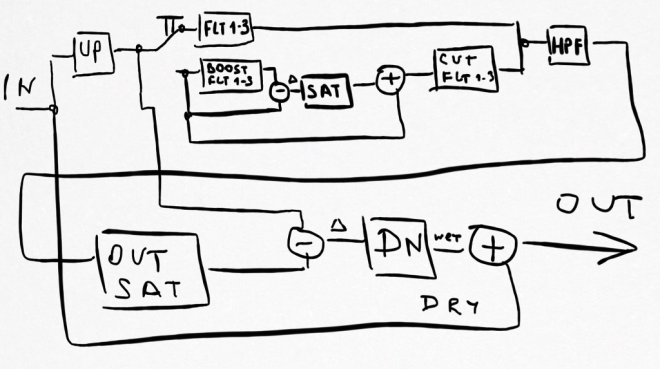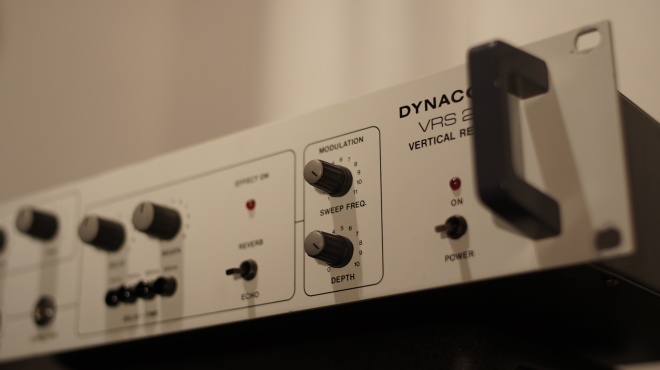Note: Some of the tips rely on features from the GE version.
Mixing against HP/LP combo
A good generic practice when EQing several tracks in a mix is too start by dialing in HP/LP combinations by an appropriate level and then do further EQing/mixing against those settings. Also using the tilt filter is a good idea to apply very first and rough tonal corrections and then working out the details afterwards with the three EQs.
Preserving low-end energy when high-pass filtering
A cool trick to preserve some low-end energy when high-pass filtering is applied is to boost the low-end while using the EQ-SAT feature. As you can see in the routing diagram the HPF comes after the main EQs and EQ-SAT. This way, harmonic overtones are generated based on the fundamentals before the HPF is applied.
Decoupling the low-end
The low-end EQ features a “Phi” option switch which allows to decouple the low-end by an allpass filter network. The crossover can be freely adjusted with the normal frequency control in this band while the gain control does not have any effect in this mode. This may work great for that mellow bass drums just as an example but in other cases it might loose some definition as a trade-off.
Compare different settings
SlickEQ contains two effect settings slots, A and B. Use them in combination with the automatic output gain control to AB test different settings. Within the plugin you can move settings between A and B but also copy&paste is there to freely copy settings between different plug-in instances. Also, undo/redo comes in handy here.
Adjusting precise values
The gain/frequency displays can also be used to enter specific values and also shortcuts are accepted, e.g. “5k” can be entered to set a value to 5000. And did you know that SlickEQ has mouse-wheel support?





Recent Comments